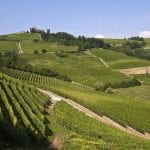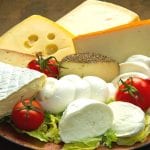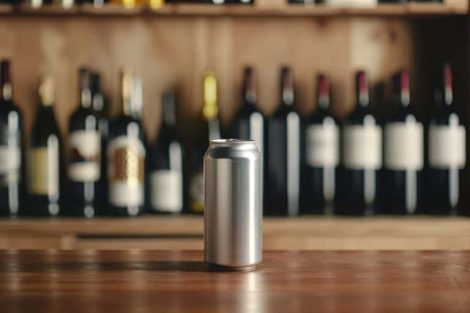Discovering the hidden treasures of nature
Her name is Eleonora Cunaccia and her friends call her Noris. But there are many who refer to her as the ‘Forest Lady’, the forests being those of the Val Rendena, in the Dolomite mountains of Spiazzo, in Trentino. For over ten years, Noris has turned her special relationship with nature into a unique profession. Each day she renews her bond, a rapport made up of work, silence, solitude and great joy. She moves among the secrets of the mountain, where at the food of a walnut tree, even in winter, underneath the snow, she can find some threads of chives. She says that if you look around you, learning to listen to nature, you can bring home the best that the woods know how to offer. Among these treasures are rose hips, yarrow, wild fennel, mallow, linden blossoms (the serenity plant), and common nettles, a concentrate of iron and vitamins. “Nature needs time and different types of manual dexterity. It reveals itself only to those who approach with grace and respect, without greed. It’s enough to ask for what one needs”, she says. The search can become ritual and “You can discover the joy of nourishment”.
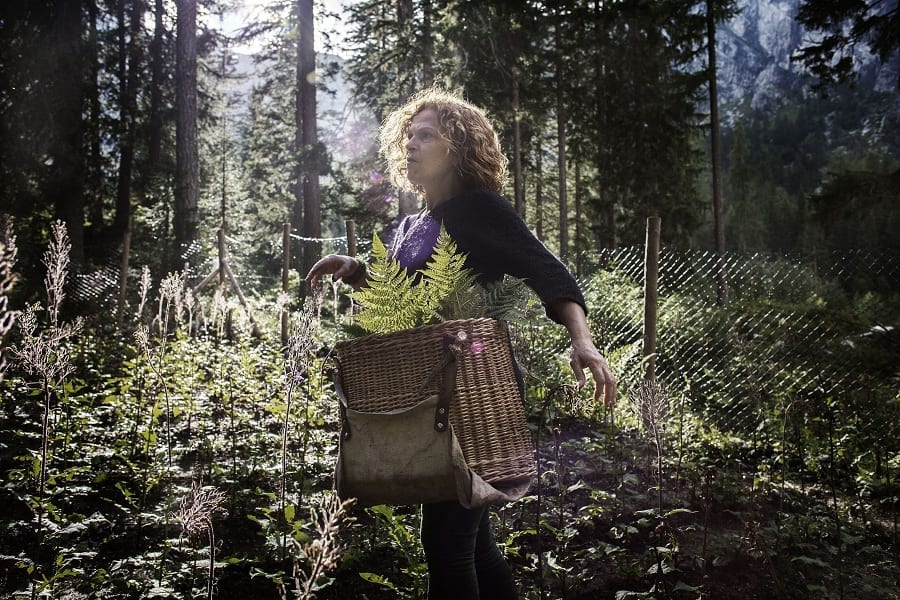
From the restaurant to the woods
Once there was a fine restaurant that Noris managed with her brother Giovanni in Spiazzo, the town where both were born. Then things became difficult and they had to shift gear. Today Noris is one of Italy’s best known foragers for wild herbs, berries and mushrooms. She understands everything edible that her mountains offer. As an expert in foraging, the term for a phenomenon that began in the 1960s and that has become a culinary trend, she seeks for the dimension that lets natural resources nourish her body and soul. Noris doesn’t like to speak of trends and movements. Instead, she reminds us that hers is a profession of commitment, built up slowly. She continues to fear, with reverential respect, this majestic force that takes and gives. “I am very afraid of nature,” she revealed sincerely. “Idon’t know everything, and I always have to be certain what I am bringing home. I have a great store of experiences with my territory, accumulated over time. But I wish everyone could discover how much life is in the nature that surrounds us, could learn to recognize a few herbs or a wild fruit, could become aware of even ten little remedies that our grandmothers knew well – how much satisfaction they would find! Each little victory, each discovery takes on a different value.”
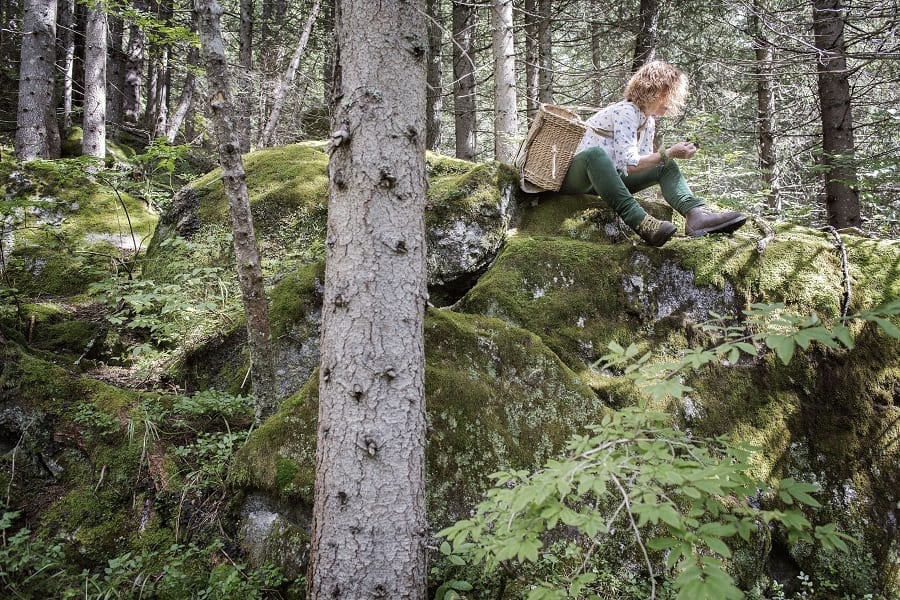
Respect and love for nature
Far from those who trumpet trends and fill their mouths with philosophies of life that sound like warnings for the elite, Noris wants to contribute to an ethical cause that calls for everyone to work for a better future. But she does it with the simplicity that accompanies her every gesture, without proclamations or life lessons. “My work is ethical because I bend my back, I labor, I earn my bread, I respect and honor nature every day. Nature knows how to be generous, but only if you know how to develop a friendship that takes into account her enormous resources without abusing them.” The point is in the difference between thoughtful consumption and the untrammeled consumption that afflicts our eating habits. “We have to see nature as a pantry to carefully protect, and not as shelves to loot.”
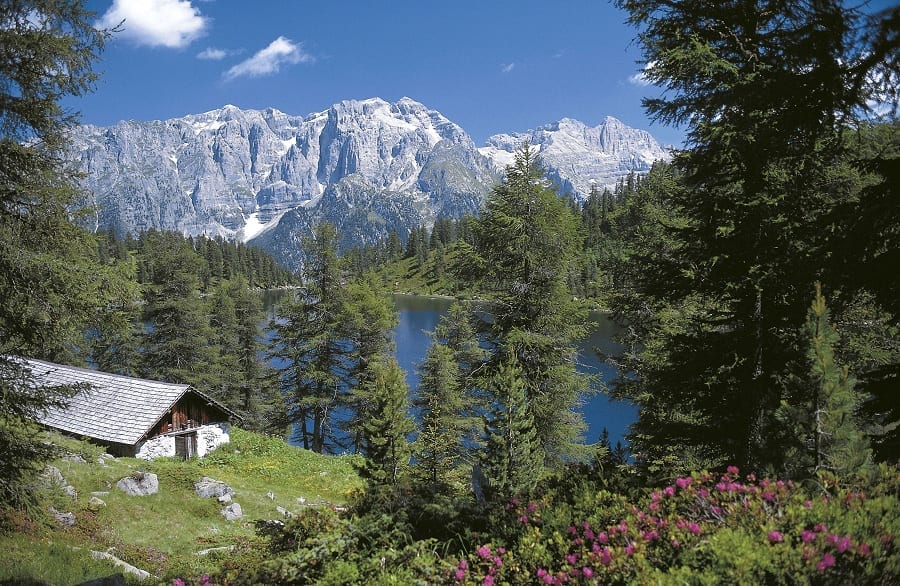
Primitivizia project
Thirteen years ago, when this all began, she worried that her choice would prove to be too extreme. Today, Primitivizia goods (the brand name she uses to package her products - www.primitivizia.it ) are sought after even abroad. “The United States imports almost all our production of Mugolio – or Pine Bud Cone Syrup. We send our wild cherries to Australia.” Noris works closely with her brother Giovanni. “In our workshop, he manages the alchemy part: he cleans, processes, extracts the forest flavor.” They turn out about twenty products, ranging from essences of chives or dandelions to rose hip ketchup and the herb known as maidenstears.
Now Noris has undertaken a new project, and for the last few years she has tried to domesticate some wild mountainous plants. In four extreme herb gardens she grows radicchio dell’orso, or Alpine sow-thistle, and is beginning to get results. “It’s a hunter’s herb, very famous in our valleys and today protected like edelweiss. In Friuli it is a Slow Food Presidio.” If she has a secret, it’s this. “Become a plant yourself. Plants have no voice. Like babies, they communicate only if you know how to interpret them. So then you have to commit yourself to slow domestication.” Without, as the Forest Lady explains, ever going against nature.
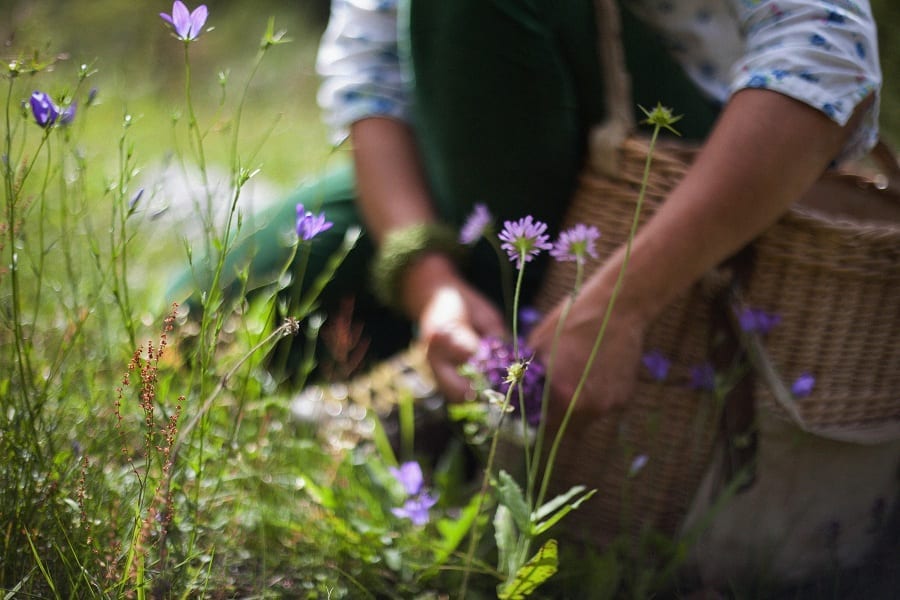
Foraging, food and ecology
The modern-day trend that involves important young chefs around the world and various professional gatherers, uses the term foraging to mean the collecting of wild, spontaneous herbs and fruit in the woods for use in the kitchen. In this sense, it is a kind of return to hunter-gatherer cultures in an ancestral era before true agricultural models were instituted. But herb gatherers in Italy and elsewhere made up a hard core of food providers for towns and cities until the 1960s, when the post-war boom gave birth to industrial agriculture and the first supermarkets. In ecology and ethology, foraging means the search for wild food resources and above all, the study of animals and their capacity to feed themselves and reproduce in nature. Foraging theory is a branch of behavioral ecology that studies the manner in which animals find food in response to the environment in which they live and the ways they maximize their energy and minimize the time spent. The contemporary foraging trend, instead, is essentially based on the old science of studying the use of edible wild plants in times of famine or other emergencies.
www.wood-ing.org | forage.berkeley.edu | theurbaneforager.blogspot.it
The Chefs
Norbert Niederkofler | St. Hubertus dell’Hotel Rosa Alpina | San Cassiano in Badia (BZ) | www.rosalpina.it | www.n-n.it
Piergiorgio Parini | Osteria del Povero Diavolo | Torriana (RN) | www.ristorantepoverodiavolo.com
Michele Biagiola ed Elvia Pelagalli | Enoteca Le Case | c.da Mozzavinci | Macerata | www.ristorantelecase.it
Enrico Mazzaroni | Il Tiglio | loc. Isola di San Biagio | Montemonaco (AP)| www.enricodeltiglio.it
Alan Bergo | The Salt Cellar | Saint Paul | Minnesota (USA) | foragerchef.com | www.saltcellarsaintpaul.com
Tommy Banks | Black Swan | Oldstead | Yorkshire (GB) | tommybanks.wordpress.com | munchies.vice.com |
Rene Redzepi | Noma | Copenaghen (Danimarca) | noma.dk |
Daniel Patterson | 373, Broadway | San Francisco (USA) | coirestaurant.com | dpgrp.co
Dave Chang | Momofuku | Momofuku Ssäm Bar | New York (USA) | momofuku.com
Ben Shewry | Attica | Melbourne | Australia | www.attica.com.au
Jocelyn Myers-Adams | TableBay Hotel | Città del Capo | Sudafrica | thetablebayhotel-capetown.h-rez.com
David Everitt-Matthias | Le Champignon Sauvage| Cheltenham (GB) | www.lechampignonsauvage.co.uk
by Livia Montagnoli
Fototeca Trentino Sviluppo S.p.A

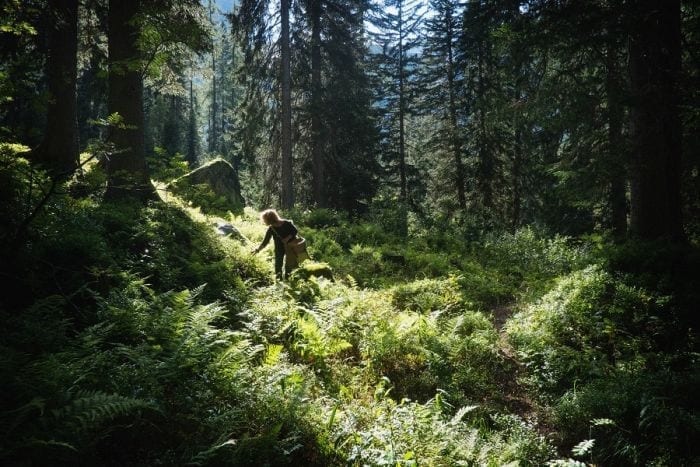

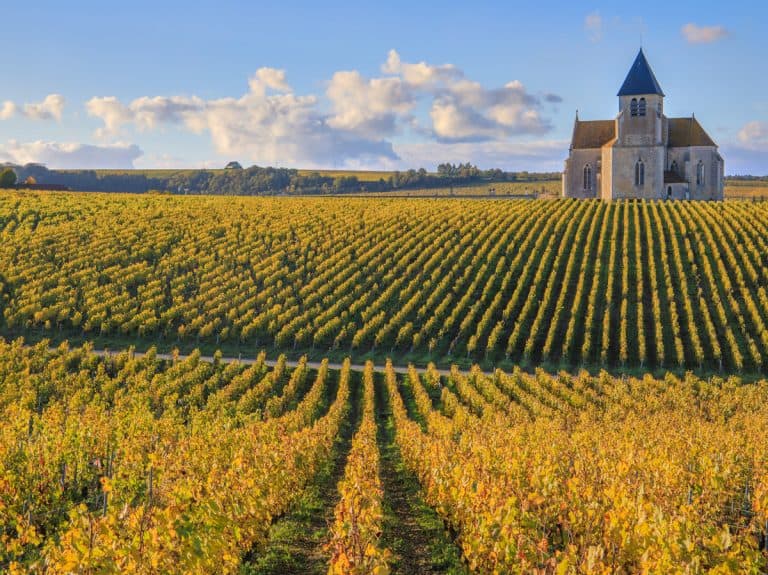 Burgundy’s resilience: growth in fine French wines despite a challenging vintage
Burgundy’s resilience: growth in fine French wines despite a challenging vintage Wine promotion, vineyard uprooting, and support for dealcoholised wines: the European Commission's historic compromise on viticulture
Wine promotion, vineyard uprooting, and support for dealcoholised wines: the European Commission's historic compromise on viticulture A small Sicilian farmer with 40 cows wins silver at the World Cheese Awards
A small Sicilian farmer with 40 cows wins silver at the World Cheese Awards Women are the best sommeliers. Here are the scientific studies
Women are the best sommeliers. Here are the scientific studies Where to eat at a farm stay in Sicily: the best addresses in the Provinces of Trapani, Palermo, and Agrigento
Where to eat at a farm stay in Sicily: the best addresses in the Provinces of Trapani, Palermo, and Agrigento